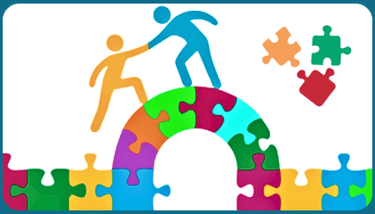The Zombie Apocalypse of Our Disconnection: Are We Living in a Virtual World?
Shuffling along through busy intersections headphones in, unaware of what is beyond the screen of your mobile device!
POINT OF VIEWPERSPECTIVE
Mark Boatwright-Frost
10/11/20245 min read


The Modern Zombie: A Reflection of Our Society
In contemporary society, the metaphor of the 'zombie' has evolved to depict individuals who are increasingly disengaged from their immediate surroundings. This phenomenon is often attributed to the pervasive influence of technology, especially smartphones and social media. Individuals immersed in their screens may appear to be functioning yet are often experiencing a profound disconnection from the real world, reminiscent of the trance-like state traditionally associated with zombies. This metaphorical representation serves as a stark reminder of the growing divide between our virtual interactions and genuine human connections.
The average individual today spends a significant portion of their day interacting with digital devices, which diminishes face-to-face interactions and alters perceptions of reality. Much like zombies who mindlessly roam in search of sustenance, people consumed by their devices often navigate through life without fully engaging with their environment. This behavior can lead to a lack of awareness regarding the people and opportunities that exist in the physical world. The incessant scrolling through social media feeds, for instance, creates an illusion of connection, while simultaneously fostering isolation and loneliness.
Furthermore, the normalization of constant connectivity has led to the blurring of boundaries between virtual and real life. Individuals may find themselves prioritizing online personas over authentic relationships, perpetuating a cycle of disconnection. This societal trend raises critical questions about the implications of habitual technology use on mental health and interpersonal relationships. As we engage with screens, our ability to interact meaningfully with the world around us diminishes, mirroring the lifeless state of a zombie. The challenge lies in recognizing this behavior and actively seeking to foster genuine connections, encouraging individuals to step away from their screens and rediscover the richness of real-life interactions.
The Impact of Stress and Disconnection
In contemporary society, the interplay between stress and disconnection has become increasingly pronounced, particularly due to the rapid evolution of technology and changing social dynamics. Psychological and emotional stressors abound in our daily lives, often leading to a heightened sense of isolation. The pressures associated with modern work environments, pervasive social media usage, and escalating personal expectations compound these feelings, ultimately influencing our mental health and interpersonal relationships.
Many individuals find themselves ensnared in demanding work situations, where the expectation to perform at peak levels may overshadow the need for genuine human connections. The incessant pursuit of productivity can leave little room for meaningful interactions, causing individuals to feel disconnected not only from their colleagues but also from their friends and family. This work-induced disconnection fosters a culture where emotional well-being is sidelined, leading to increased stress levels and a pervasive sense of loneliness.
Social media, while designed to connect individuals, often results in a paradoxical outcome. Users may spend hours curating online personas and engaging with curated content, which may heighten feelings of inadequacy and isolation. The relentless comparison to others’ lives can exacerbate stress, leading many to retreat further into a virtual bubble. As meaningful communication diminishes, the authenticity of relationships becomes compromised, creating an emotional distance that furthers disconnection.
Moreover, the pressure to meet personal expectations can be equally daunting. Individuals often feel compelled to project an idealized version of themselves, resulting in a disconnect between their true selves and their public images. This facade can lead to an internal struggle, reinforcing feelings of inadequacy and stress. Consequently, recognizing these impacts on mental health and relationships is crucial for fostering stronger connections in our increasingly virtual world. Understanding the effects of these stressors can empower individuals to seek balance and prioritize genuine human interaction amidst the chaos of modern life.
The Role of Light and Color in Our Digital Lives
In today’s digital age, the interplay of light and color plays a crucial role in shaping our online experiences and influencing our behaviors. The vibrant colors and bright lights of screens are not merely aesthetic choices; they are strategic tools designed to captivate attention and encourage prolonged engagement. Digital media platforms, particularly social media applications, often employ bold hues and high-contrast visuals to create an inviting atmosphere that can be hard to resist. This deliberate design approach aims to keep users engrossed, often leading to significant time spent interacting with the digital world.
The psychological impact of these design elements cannot be overlooked. Bright screens are known to elicit certain emotional responses, triggering feelings of excitement and dopamine release, which reinforce user behavior. Colors like red and yellow are often used to create a sense of urgency, prompting users to take immediate action, whether it’s liking a post or sharing content. This color psychology can contribute to a scenario in which our digital interactions overshadow face-to-face relationships, fostering a virtual existence that may diminish our real-world connections.
Furthermore, the dazzling displays found in digital environments can result in sensory overload, leading to adverse effects on mental health. Prolonged exposure to stimulating visuals can lead to feelings of anxiety and restlessness, which are exacerbated by the constant notifications and updates that demand attention. It is imperative to recognize how these elements manipulate our viewing habits and social interactions, encouraging over-stimulation and, ultimately, disconnection from our physical surroundings.
Being mindful of our digital consumption habits is vital in mitigating the challenges posed by the persuasive nature of light and color in our screens. Understanding the underlying motivations behind design choices can prompt individuals to reflect critically on their engagement with digital media, fostering healthier relationships with both technology and the people in their lives.
https://www.tcpi.com/wp-content/uploads/2017/12/Psychological-Impact-of-Light-and-Color.pdf
Reconnecting with Reality: Strategies for Survival in the Real World
In today's fast-paced digital landscape, where engagement with screens often overshadows real-life interactions, it is crucial to develop effective strategies to reconnect with our surroundings and foster authentic relationships. One of the primary approaches to combatting disconnection is by setting specific screen time limits. By allocating designated periods for digital activities, individuals can encourage themselves to participate in other meaningful pursuits that enhance their awareness of the physical world.
In addition to regulating technology use, practicing mindfulness can significantly aid in breaking the cycle of digital distraction. Mindfulness involves being fully present in the moment, thus allowing individuals to fully engage with their immediate environment. Techniques such as meditation, deep breathing exercises, and focused attention can cultivate a mindset adept at appreciating life's subtle nuances. Implementing such practices not only aids in reducing anxiety but also encourages more profound connections with others.
Moreover, engaging in outdoor activities is a highly effective method to bridge the gap between virtual and real experiences. Nature provides a refreshing backdrop for individuals to explore, promoting physical well-being and mental clarity. Activities such as hiking, biking, or simply walking in a park foster opportunities to connect with both nature and fellow human beings, facilitating conversations and friendships that transcend virtual boundaries.
Furthermore, prioritizing face-to-face interactions is paramount in fostering a sense of belonging. By recognizing the value of human connection, individuals can actively seek opportunities to engage in social gatherings, community events, or simply meet friends for coffee. Rebuilding these relationships encourages emotional support and connection, essential for thriving in an increasingly digital world.
By implementing these strategic measures, individuals can break free from the inertia of virtual existence, reclaim their presence in the real world, and foster meaningful relationships that nourish the human experience.
Yes we sound like your mother...go outside and play!
Thoughts on a human future... ~Mark Boatwright-Frost
The Resilient Community Movement
In today's ever-changing world, the importance of fostering resilience within neighborhoods and communities cannot be overstated. By facilitating connections among residents, we empower individuals to share their stories and experiences, creating a strong support network. This collaborative spirit not only enhances the well-being of community members but also amplifies their voices, ensuring that their unique human needs are recognized and addressed.
Contact and Connect
info@reseco.org
© 2024. All rights reserved.
